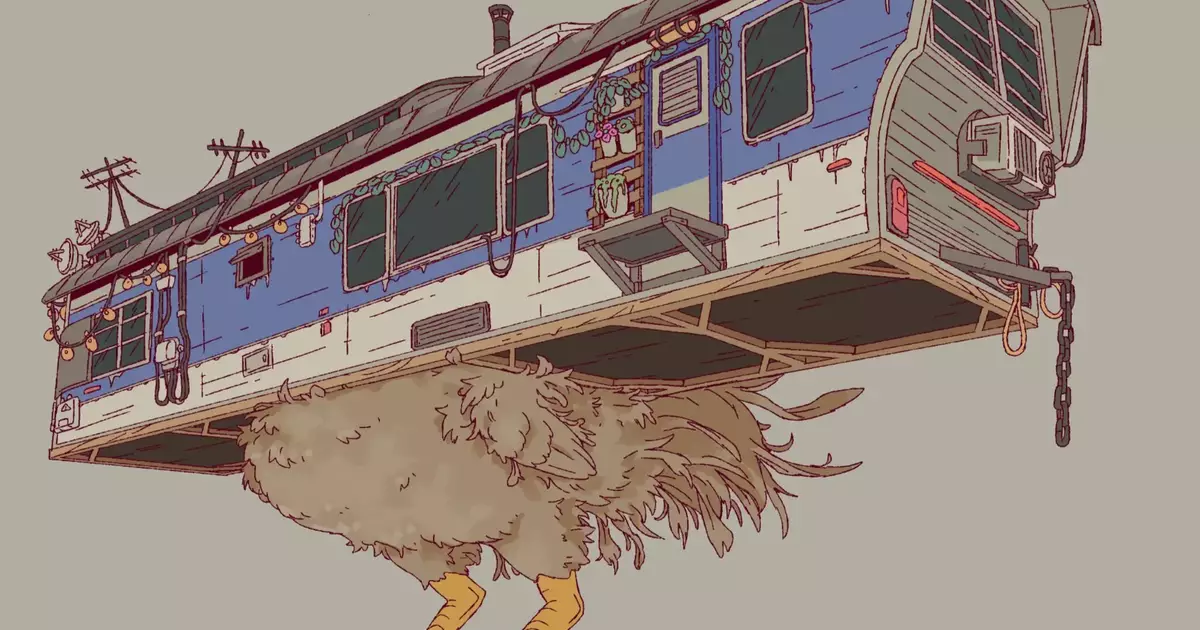In a landscape where video games often oscillate between hyper-realism and fantastical realms, Giant Sparrow stands out as a creator of poignant experiences that probe the depths of narrative and human emotion. Their previous work, *What Remains of Edith Finch*, is a hauntingly introspective collection of tales that focus on the transient and tragic lives of a cursed family living in an unusual treehouse. The game invites players to navigate through a range of interactive stories that explore the fragility of life, utilizing an innovative variety of gameplay mechanics that shift seamlessly from the whimsical to the macabre. As expectations build for Giant Sparrow’s upcoming project, known informally as “Heron,” the promise of a similarly rich tapestry of contrasting themes offers an exciting glimpse into their artistic exploration.
The forthcoming title draws on the concept of a field biologist investigating the peculiarities of organic life, a theme that opens doors for a multitude of creative possibilities. Ian Dallas, the founder of Giant Sparrow, has hinted at the creative ambitions for this title. In conversation with the New York Times, he emphasizes the studio’s desire to create an experience that transcends the conventional narrative approaches typically found in nature documentaries. He criticizes the shallow, overly segmented portrayal of life in such documentaries, suggesting that they often serve only as a passive distraction. Dallas’s aim is to craft a more immersive and engaging experience that challenges players to reflect deeply on the intricacies of biology and the oddities of the natural world, rather than glossing over superficial elements.
The initial creative vision for “Heron” appears to incorporate a blend of inspiration drawn from classic works like *Ico* and *Spirited Away*, along with the evocative visuals found in nature documentaries. This eclectic approach indicates a determination to use cutting-edge technology to manifest something genuinely ‘alive,’ fostering a world teeming with wonder and a touch of the bizarre. Such a creative direction suggests that players may encounter imaginative mechanics involving quirky elements—like carefree chickens that embody their own absurdities—and intricate explorations designed to provoke thought and curiosity.
The introduction of whimsical creatures and bizarre mechanics marks a significant conceptual shift for the studio. Rather than following a rigid structure dictated by traditional gameplay patterns, Dallas aims to delve deeper into the exploration of life’s eccentricities. This project promises to defy player expectations: rather than a simple environment where tasks are rapidly assigned and completed, “Heron” will likely jack into broader concepts of ecological existence and the personal interpretations we assign to the natural world.
There’s a fascinating tension between the playful and the grotesque that has been identified in the game’s design philosophy. The exploration of themes, such as the reproductive cycle of butterflies, underscores how deeply unsettling and marvelous nature can be. Dallas’s reflections hint at the game’s capability to entice curiosity while simultaneously provoking discomfort. This concoction of emotions enhances player engagement, creating a richer experience where individuals can confront their feelings about both the subtly stylish forms of life and their grittier, more primal dimensions.
What excites me about the potential of this release is its ambition to flip the script on conventional animal interactions in gaming. There is an absence of active agency traditionally afforded to players in animal-centric games, often relegating them to passive observers. Instead, Giant Sparrow aims to imbue its characters with a more interactive and vibrant life, challenging the players to engage in a dialogue with the environment rather than simply pressing buttons to advance. Dallas’s vision suggests that this title might still allow for the player’s choices to shape the world while emphasizing the significant agency of the creatures within it.
The overarching ambition of Giant Sparrow lends itself to a discussion about how video games can influence our understanding of biology and other scientific disciplines. By presenting unusual characters as participants in a complex ecosystem rather than merely subjects of study, the game could foster a more nuanced understanding of biodiversity. This would not only entertain but educate, allowing players to glean insights into the intricacies of life while simultaneously pondering broader questions about our relationship with nature.
As we await the official unveiling of Giant Sparrow’s newest work, the whispers surrounding the project reflect a blend of creativity, emotion, and intellectual exploration reminiscent of the avant-garde literary genre the New Weird. Much like Jeff VanderMeer’s celebrated works, this game is poised to challenge the status quo of both narrative and gameplay. It beckons us to consider the unusual and the avant-garde, encouraging us to question our comfort in the face of nature’s majestic oddities. “Heron” holds the promise of a profound voyage into the unconventional aspects of the world around us.


Leave a Reply